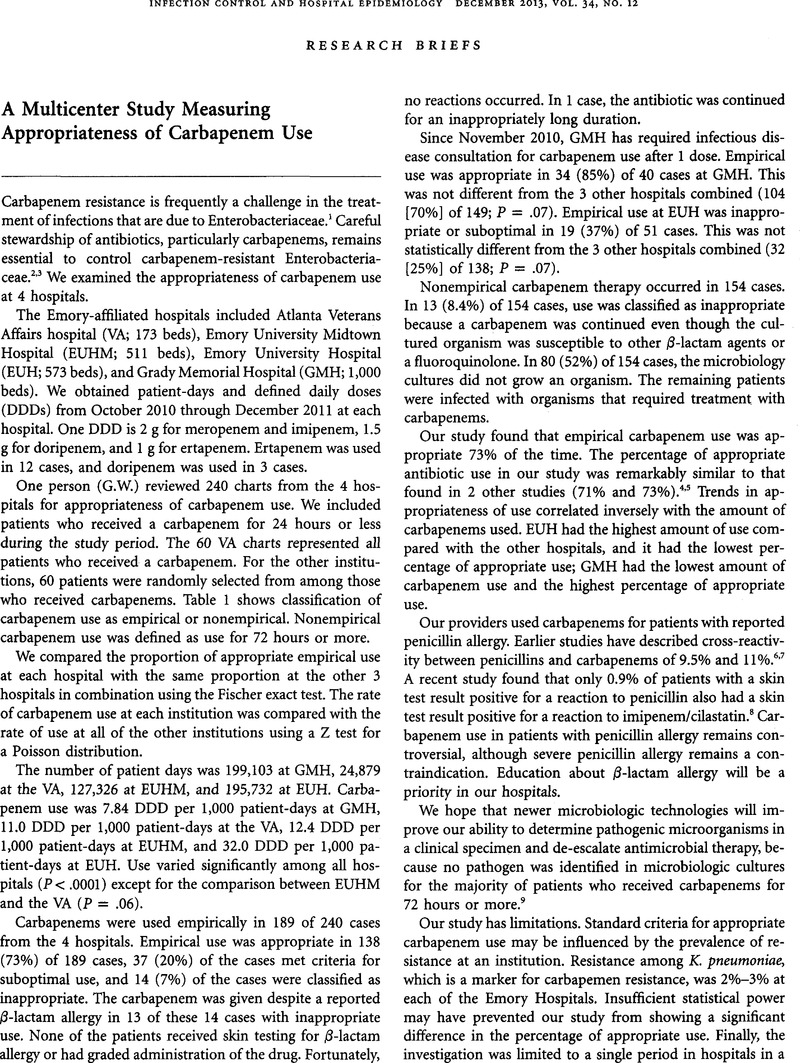Crossref Citations
This article has been cited by the following publications. This list is generated based on data provided by Crossref.
Reddy, Sujan C
Jacob, Jesse T
Varkey, Jay B
and
Gaynes, Robert P
2015.
Antibiotic use in US hospitals: quantification, quality measures and stewardship.
Expert Review of Anti-infective Therapy,
Vol. 13,
Issue. 7,
p.
843.
So, Miranda
Yang, Daisy Yu
Bell, Chaim
Humar, Atul
Morris, Andrew
and
Husain, Shahid
2016.
Solid organ transplant patients: are there opportunities for antimicrobial stewardship?.
Clinical Transplantation,
Vol. 30,
Issue. 6,
p.
659.
Van Parys, Jacob
Stevens, Michael P.
Moczygemba, Leticia R.
and
Pakyz, Amy L.
2016.
Antimicrobial Stewardship Program Members’ Perspectives on Program Goals and National Metrics.
Clinical Therapeutics,
Vol. 38,
Issue. 8,
p.
1914.
Michalski, Derek
Ghamrawi, Riane J.
and
Tsigrelis, Constantine
2018.
Evaluation of institutional guideline adherence for carbapenem use at a large academic medical center.
Infectious Diseases,
Vol. 50,
Issue. 3,
p.
226.
Mardani, Masoud
Abolghasemi, Sara
and
Shabani, Shiva
2020.
Impact of an antimicrobial stewardship program in the antimicrobial-resistant and prevalence of clostridioides difficile infection and amount of antimicrobial consumed in cancer patients.
BMC Research Notes,
Vol. 13,
Issue. 1,
Al-Hadithi, Dunia
Al-Zakwani, Ibrahim
Balkhair, Abdullah
and
Al Suleimani, Yousuf M.
2020.
Evaluation of the appropriateness of meropenem prescribing at a tertiary care hospital: A retrospective study in Oman.
International Journal of Infectious Diseases,
Vol. 96,
Issue. ,
p.
180.
Cole, Jennifer L.
2023.
Carbapenem Appropriateness in a Rural Facility.
Infectious Diseases in Clinical Practice,
Vol. 31,
Issue. 5,
p.
1.



